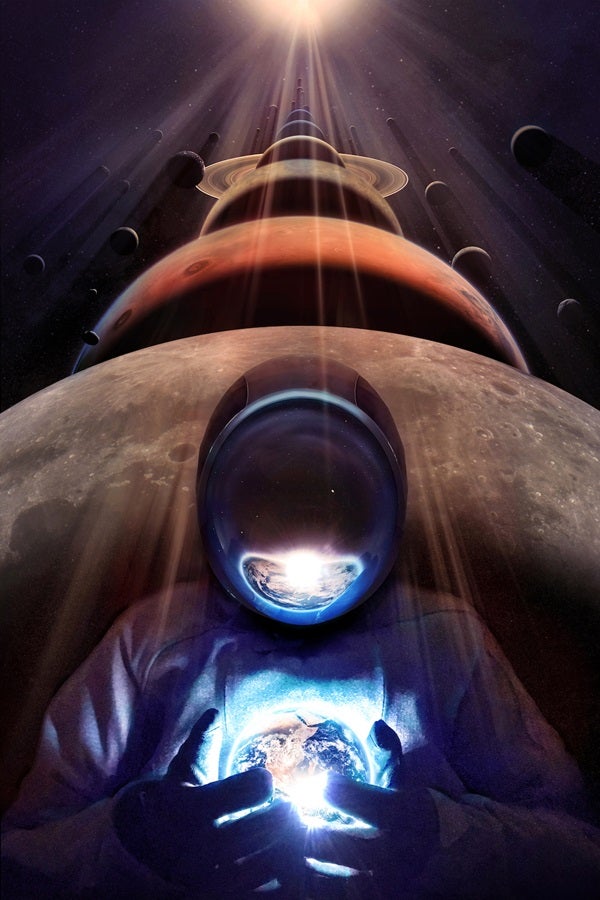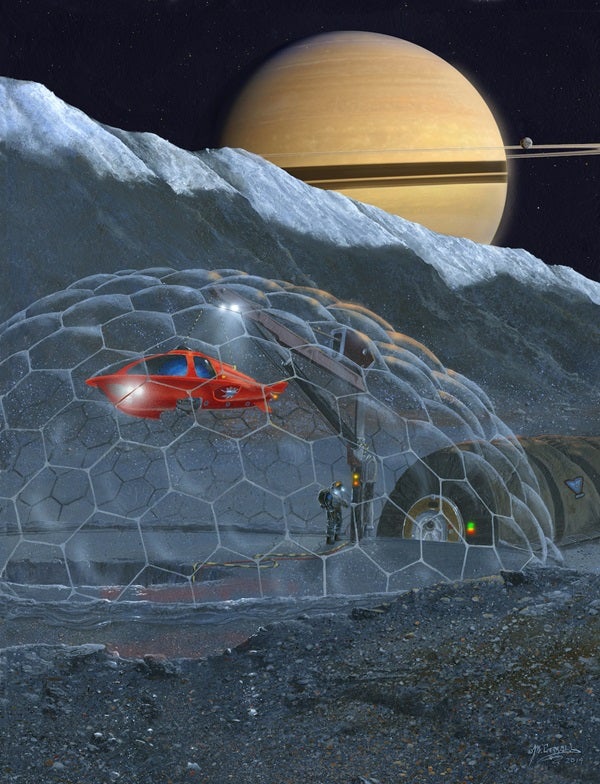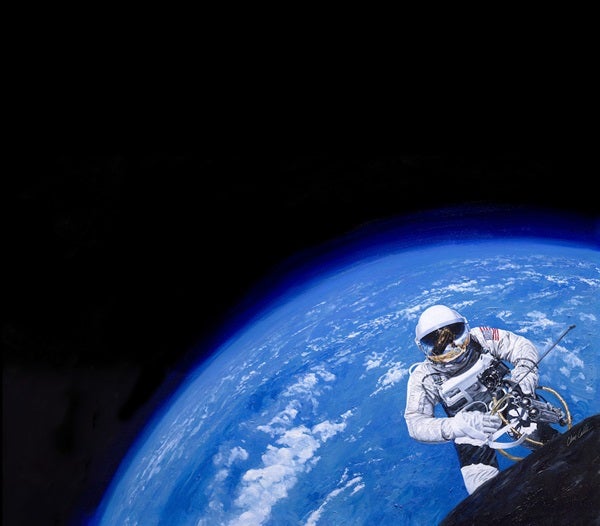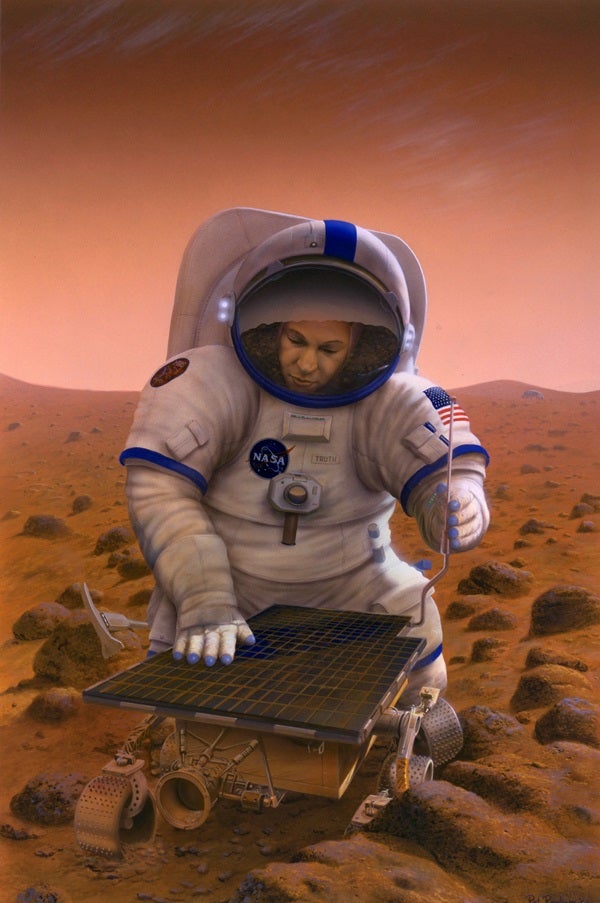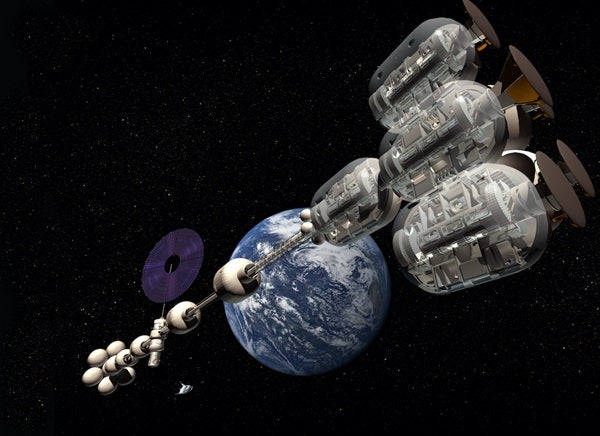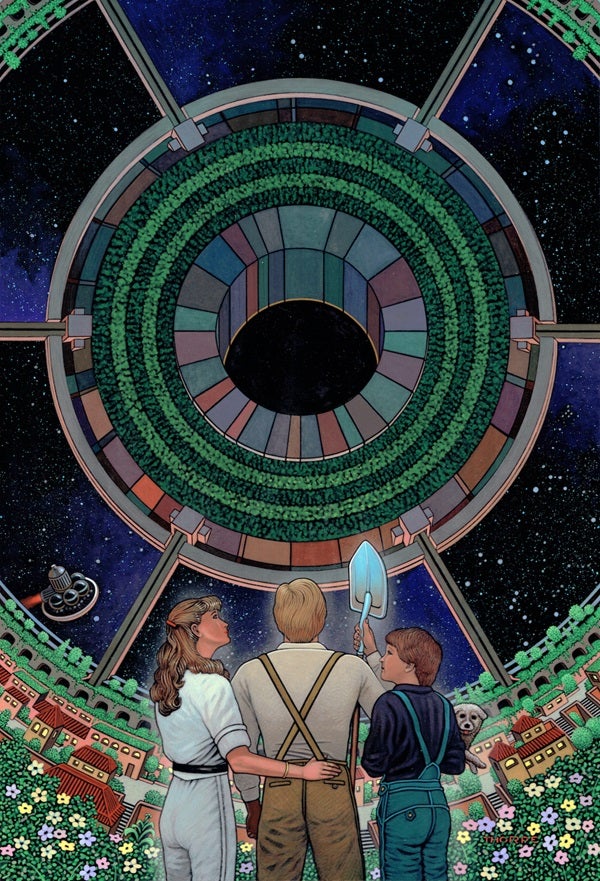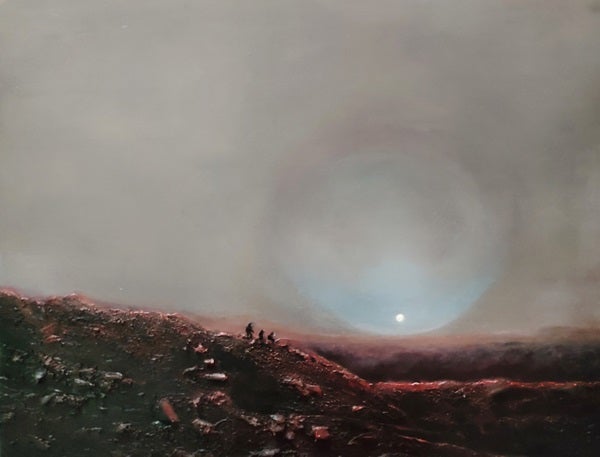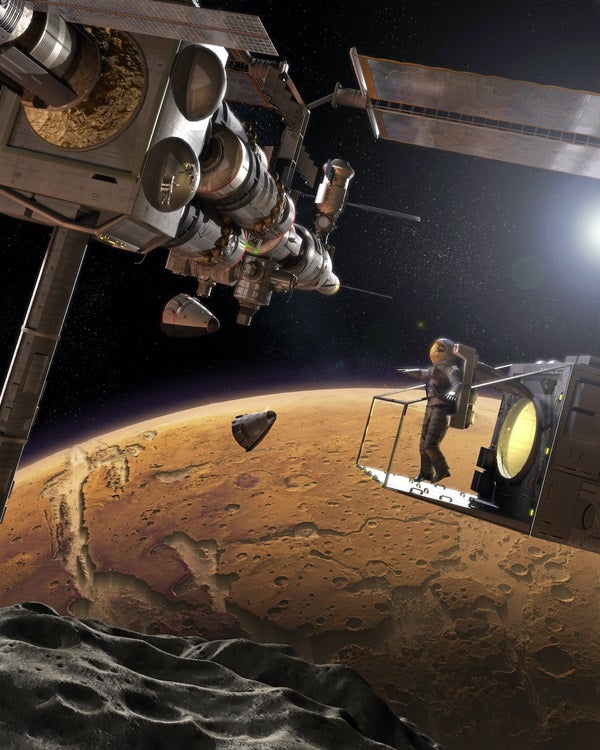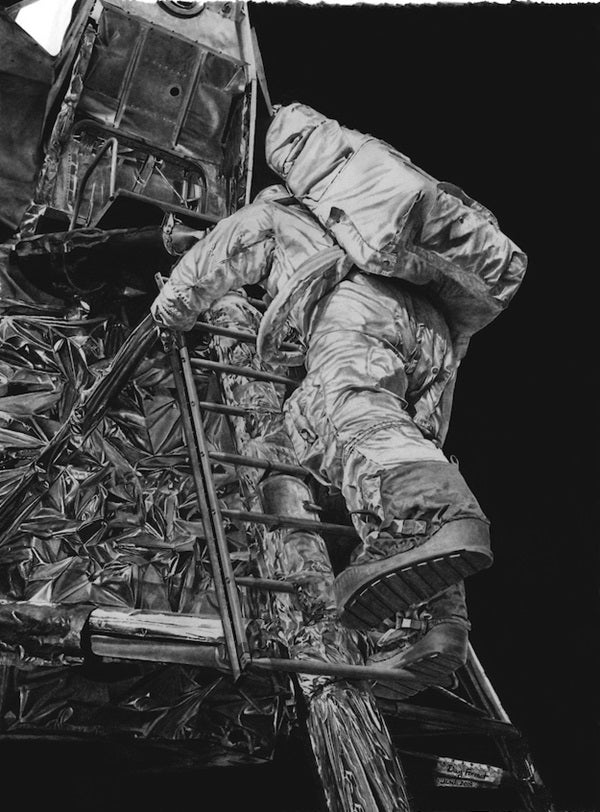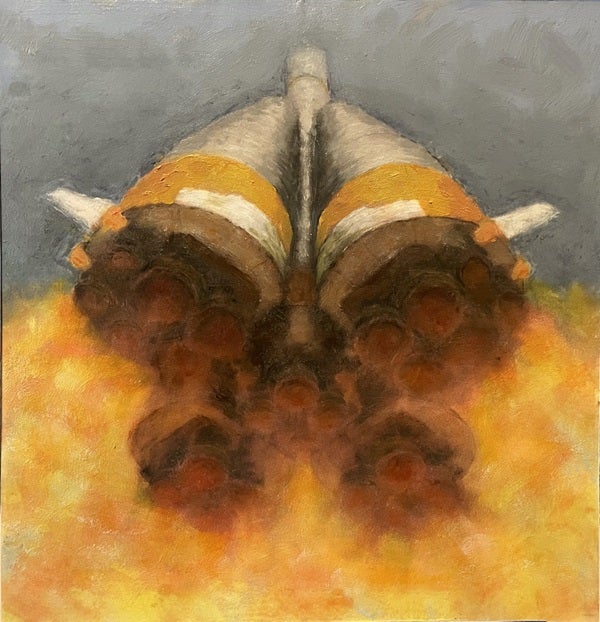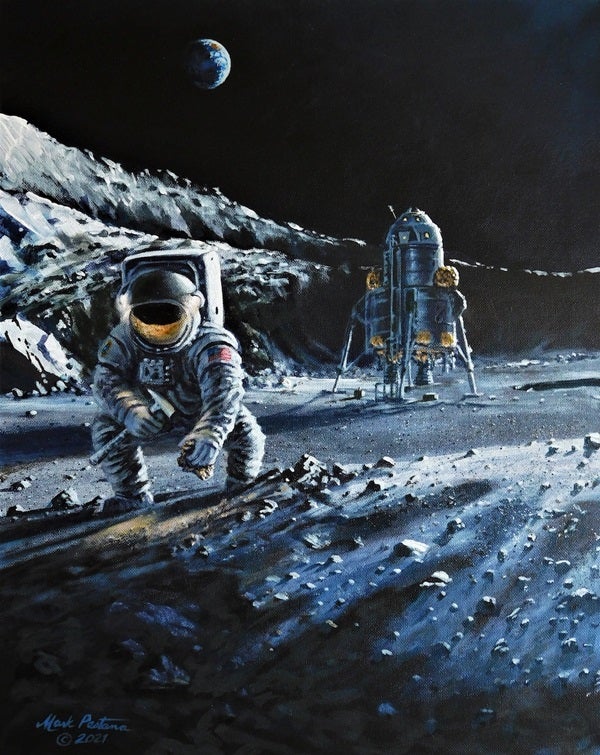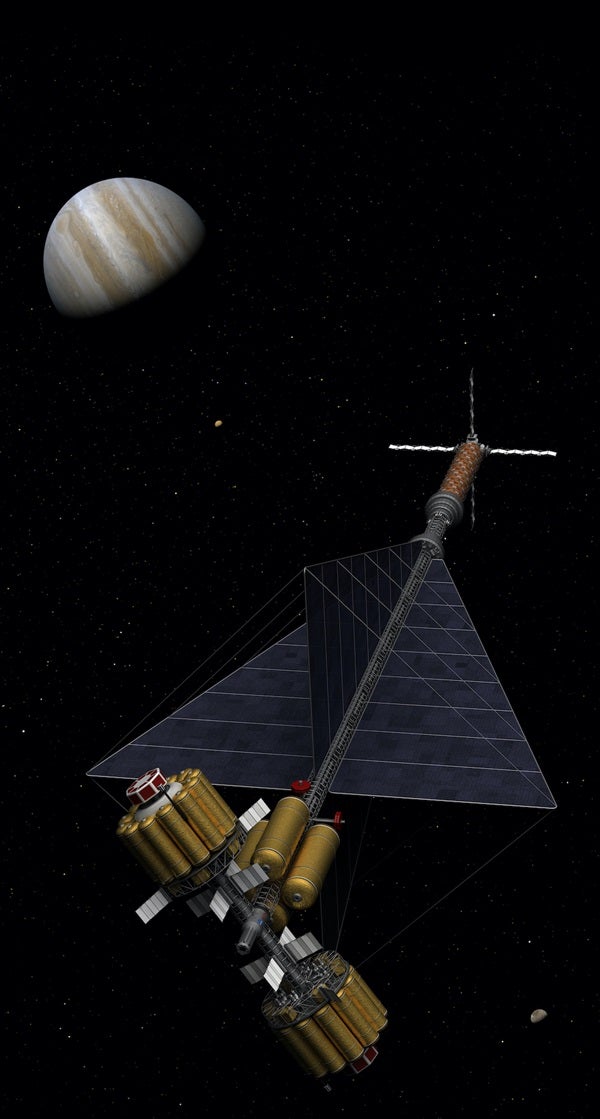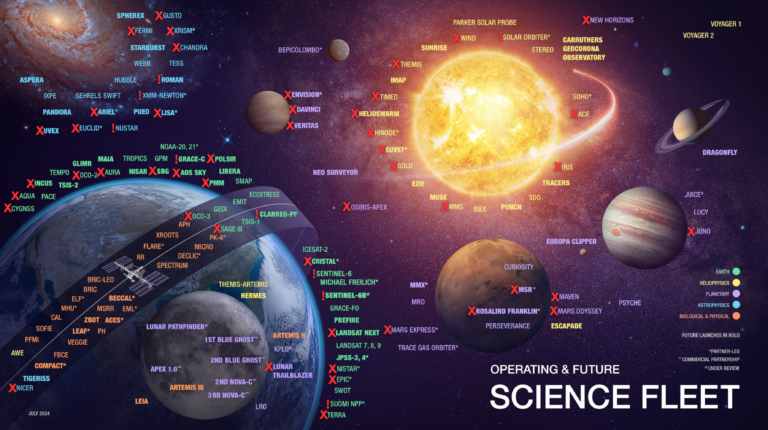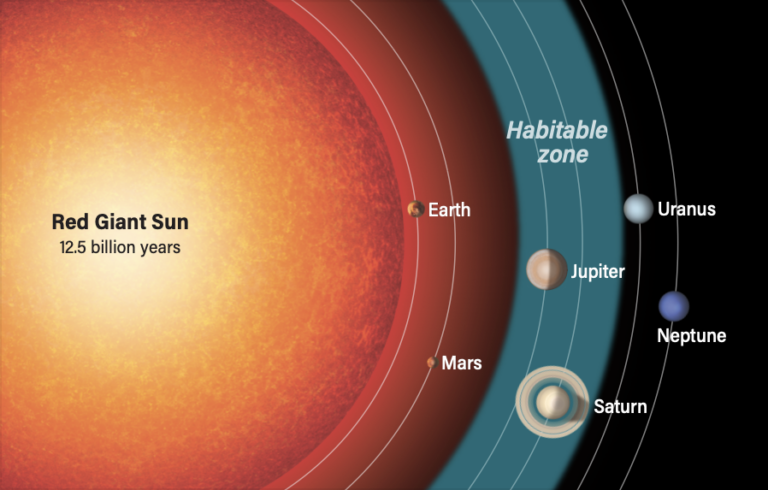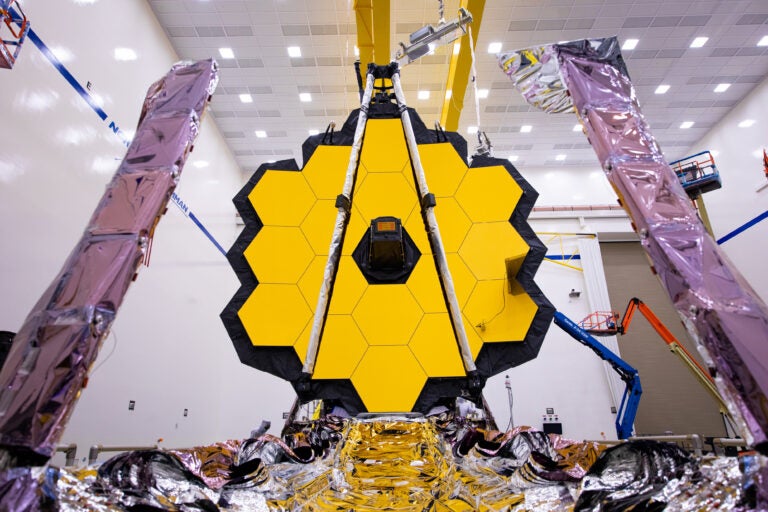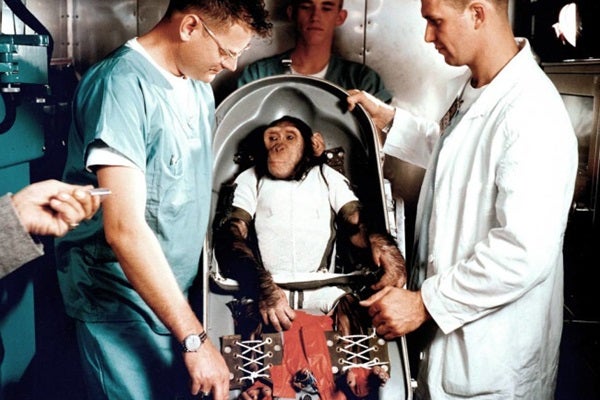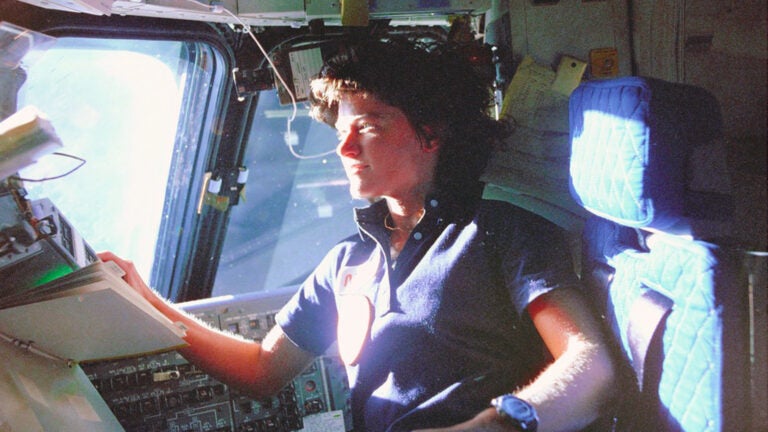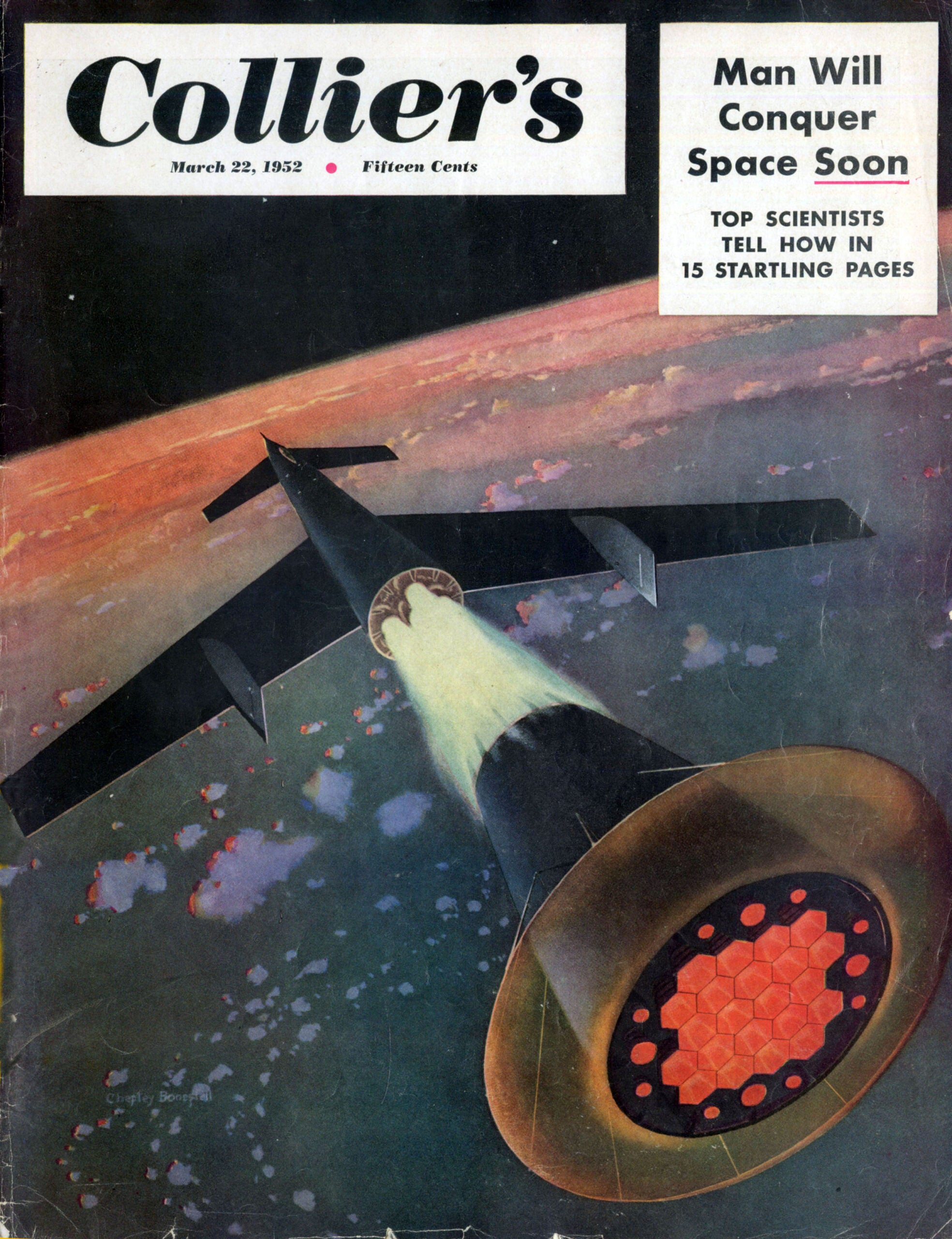A couple hiking in the Shamshu region of Jupiter’s moon Io watches as a lava geyser sputters to life beyond the distant hills. Amazing vistas of cliffs and jumbled terrain colored by sulfur compounds stretch before the space tourists, who wear futuristic radiation-proof suits.
For as long as the dream of human spaceflight has existed, artists have been inspired to imagine and depict what such amazing journeys might look like. Before the age of modern photography, explorers were frequently accompanied by artists who created drawings and paintings of the unknown regions of the world to delight and inspire the public. This trend has continued as the space artists of today work with the global astronomy community to create inspirational visions of space exploration.
The modern era of space art began after World War II. Rapid progress in aviation, rocketry, atomic energy, and other technical advances made the development of spacecraft seem tangible. The U.S. emerged from WWII as a global superpower with enormous technical and industrial capacity. At the same time, science fiction stories focused on space adventures increased in popularity. Human spaceflight appeared to be just around the corner and space artists such as Chesley Bonestell (1888–1986) played an important role in making space travel appear real to the public. Bonestell’s paintings exhibited a startling realism, making it easy to believe they represented an actual glimpse of humanity’s spacefaring future.
Following the Soviet Union’s launch of Sputnik in 1957, space art was strongly influenced by humanity’s rapidly expanding efforts to explore space. The space race between the USSR and the U.S. culminated in the Apollo lunar landings from 1969 to 1972. During this exciting time, there appeared to be no limits to what humanity could accomplish in space. Seeing the success of the American space program, aerospace companies commissioned space art to promote bold visions of robust human exploration throughout the solar system.
But after the Moon landings, the pace of human space exploration slowed considerably. In the 1980s, NASA’s space shuttle flew for the first time, enabling limited human activity in space to crewed operations in low Earth orbit (LEO). These efforts ultimately led to the establishment of the International Space Station (ISS).
While the prospects for human exploration of the solar system dwindled, robotic missions expanded dramatically, with an astounding record of success. By 2022, every planet in the solar system had been visited, as well as numerous asteroids, comets, and Kuiper Belt objects. And several robot spacecraft are outbound into the depths of interstellar space, bearing messages from humanity.
Although humans have not ventured beyond LEO since the Apollo Moon landings, space visionaries persevered, aided by space artists who continued to create compelling visions of robust human spacefaring.
Today, we are experiencing an exciting Second Golden Age of space exploration with the rise of commercial spaceflight operations by a variety of private companies. NASA is now developing new launch vehicles and spacecraft for human space operations beyond LEO. Ambitious plans are being created for human exploration on the Moon, Mars, and beyond. The road ahead remains challenging, but humanity is moving forward, and space artists are helping to show the way.
Space art encompasses a wide variety of subject matter, but a significant portion of it focuses on envisioning how humans travel, explore, live, and work in space. This kind of art usually contains depictions of spacecraft, astronauts, satellites, space stations, habitats, and the associated hardware involved in human spacefaring.
While there are a variety of artistic styles that can be employed, many of the artists attracted to the demanding world of space exploration are realists. In other words, their depictions are representational and realistic. Many space artists choose to adopt a traditional “painterly” style, where the brushstrokes are quite visible, yet the resulting image is immediately recognizable. Furthermore, realists generally aim to convey their subject matter in a compelling and believable manner. Photographic realism is merely one method of attaining this goal, while other artists might choose a much more abstract approach.
Astronaut Ed White performs America’s first spacewalk, secured to the spacecraft with an umbilical line. Shaved samples from some of the pieces of silver that astronaut Jim McDivitt carried with him on the Gemini 4 Mission have been mixed into the oil paint for White’s space suit and cord.
The realist space artist must master a variety of skills to create convincing renditions of human space exploration. These skills include perspective and mechanical drawing techniques, a grasp of basic engineering principles, and the ability to create effective astronomical backdrops for the scene. All these are combined using artistic insight to create art that is aesthetically pleasing as well as technically plausible.
The use of traditional media is alive and well in the world of space art. Artists use a wide array of tools such as pencils, pens, markers, and paint to create their visions. However, a significant portion of space art has moved into the digital realm, especially for those artists who specialize in depicting hardware. Since real-world hardware is now designed using 3D computer-aided models and virtual reality tools, it’s only natural that artists should follow suit. The rapid development and commercial availability of those powerful tools has enabled many new possibilities for space artists. Even when creating artwork using traditional hand-painting techniques, 3D modeling and rendering can provide excellent reference imagery to ensure that the scene perspective and lighting are correct for a given view.
A rotating tethered habitat orbits above an Earth-like world. Using solar panels for power, the station is capable of housing 100 people in a variable-gravity environment. A spacecraft at lower left is returning from an exploratory mission to the surface of the planet.
Space art is frequently used to accurately document significant events in aerospace history. It is extensively used by the global aerospace industry to illustrate and explain complex spacecraft design and mission proposals. Compelling art influences investors and the public and helps fund the project. After all, the best space art always manages to convey a sense of wonder and the impending adventure that awaits humanity as we set sail upon the vast ocean of space. — Aldo Spadoni
As she collects lunar samples near a conceptual lander, the next human to step on the Moon pioneers a new phase of exploration. A half-century after the Apollo era of heavy, cumbersome spacesuits, new materials and engineering have enabled more flexibility, endurance, and comfort.


